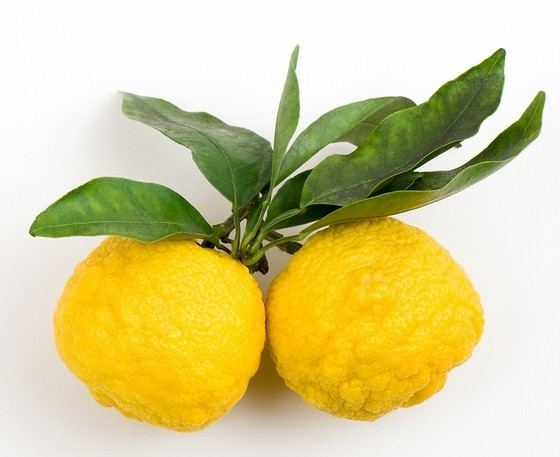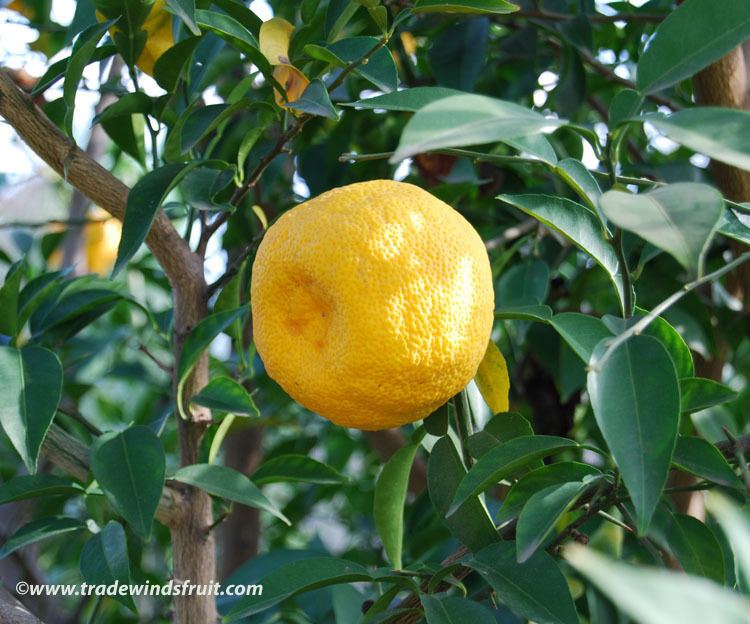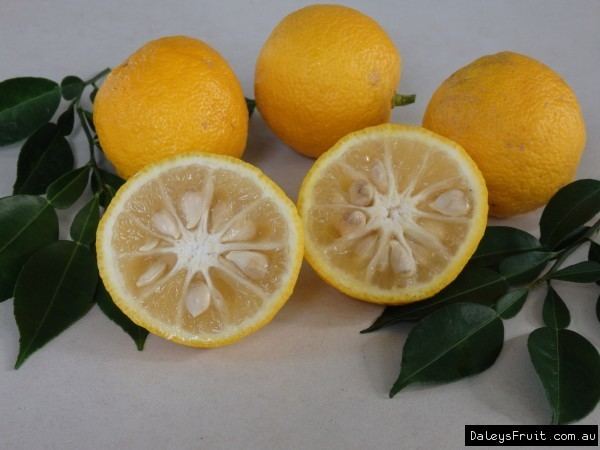Kingdom Plantae Family Rutaceae Species C. junos Rank Hybrid | Order Sapindales Genus Citrus Higher classification Citrus | |
 | ||
Scientific name Citrus ichangensis x Citrus reticulata var. austera Similar Citrus, Satsuma Mandarin, Sudachi, Shiso, Wasabi | ||
2014 11 24 banana plants citrus junos yuzu
Citrus junos or yuzu (from Japanese ユズ) is a citrus fruit and plant in the family Rutaceae. It is called yuja (from Korean 유자) in Korean cuisine context. Both Japanese yuzu and Korean yuja are cognates of Chinese yòuzi (柚子), but the Chinese word means pomelo. Yuzu is called xiāngchéng (香橙) in Chinese.
Contents
- 2014 11 24 banana plants citrus junos yuzu
- Description
- Cultivation
- Varieties and similar fruits
- Japan
- Korea
- Western world
- Other uses
- References

Description

The fruit looks somewhat like a small grapefruit with an uneven skin, and can be either yellow or green depending on the degree of ripeness. Yuzu fruits, which are very aromatic, typically range between 5.5 and 7.5 cm in diameter, but can be as large as a regular grapefruit (up to 10 cm or larger).

Yuzu forms an upright shrub or small tree, which commonly has many large thorns. Leaves are notable for a large petiole, resembling those of the related kaffir lime and ichang papeda, and are heavily scented.

Yuzu closely resembles sudachi (a Japanese citrus from Tokushima Prefecture) in many regards; they share a similar mandarin-ichang papeda ancestry, though yuzu eventually ripen to an orange colour, and there are subtle differences between the flavours of the fruit.
Cultivation
The Yuzu originated and grows wild in central China and Tibet. It was introduced to Japan and Korea during the Tang Dynasty and it is in these nations that it is cultivated most widely.
It is unusual among citrus plants in being relatively frost-hardy, due to its cold-hardy C. ichangensis ancestry, and can be grown in regions with winters at least as low as -9 °C (15 °F) where more sensitive citrus would not thrive.
Varieties and similar fruits
In Japan, an ornamental version of yuzu called hana yuzu (花ゆず, 花柚子) "flower yuzu" is also grown for its flowers rather than its fruit. A sweet variety of yuzu known as the yuku, only present in Japan, became severely endangered during the 1970s and 1980s; a major attempt has been made to revive this varietal in southern Japan. Another variety of yuzu in Japan, with knobby skin is called shishi yuzu (獅子柚子, literally "lion yuzu").
Dangyuja, a Korean citrus fruit from Jeju Island, is often considered a type of yuja due to its similar shape and flavour, but it is genealogically a variety of pomelo.
Japan
The yuzu's flavour is tart, closely resembling that of the grapefruit, with overtones of mandarin orange. It is rarely eaten as a fruit, though in the Japanese cuisine its aromatic zest (outer rind) is used to garnish some dishes, and its juice is commonly used as a seasoning, somewhat as lemon is used in other cuisines.
It is an integral ingredient (along with sudachi, daidai, and other similar fruits) in the citrus-based sauce ponzu, and yuzu vinegar is also produced.
Yuzu is often combined with honey to make yuzu hachimitsu (柚子蜂蜜)—a kind of syrup that is used to make yuzu tea (柚子茶) or as an ingredient in alcoholic drinks such as the yuzu sour (柚子サワー).
It is also used to make liquor (such as yuzukomachi, 柚子小町) and wine.
Yuzu can also be used to make various sweets including marmalade and cake.
Yuzu kosho (also yuzukosho, literally "yuzu and pepper"), is a spicy Japanese sauce made from green or yellow yuzu zest, green or red chili peppers, and salt.
Slivered yuzu rind is also used to garnish a savoury, salty egg-pudding dish called chawanmushi, as well as miso soup.
It is often used along with sudachi and kabosu.
Yuzu has also been used extensively in the flavoring of many snack products, such as Doritos.
Korea
In Korean cuisine, yuja is most commonly used to make yujacheong (yuja marmalade) and yujacha(yuja tea). Yujacheong can be made by sugaring peeled, depulped, and thinly sliced yuja, and yujacha can be made by mixing hot water with yujacheong. Yujahwachae, a variety of hwachae (fruit punch), is another common dessert made with yuja. Yuja is also a common ingredient in Korean-style western food, such as salads.
Western world
Beginning in the early 21st century, yuzu has been increasingly used by chefs in the United States and other Western nations, achieving notice in a 2003 article in The New York Times. Yuzu is used by a number of breweries in beer: Almanac Beer Company in San Francisco, CA produces a barrel aged sour citrus ale using yuzu as one of several adjuncts. Colorado-based New Belgium Brewing Company produces a limited-release imperial Berliner weisse that features yuzu as well as London, UK based brewery Pressure Drop producing Nanban Kanpai - a Wheat IPA that features yuzu. Insight Brewing Company in Minneapolis, Minnesota brews a pale ale with yuzu, called The Garden of the Hell Chicken. Garage Project, a brewery in Wellington, New Zealand brews a sour beer featuring yuzu and honeydew melon called Wabi Sabi Sour. The Dutch beer called iKi and in Finnish cider called Golden Cap Black, brewed in Finland. BridgePort Brewing also used the fruit in its new summer beer, Summer Squeeze. The Swedish glögg manufacturer Blossa had a limited edition which contains yuzu and ginger. Finnish soft drink manufacturer Hartwall has a limited edition soda containing yuzu. In Australia, a popular flavour of Mentos "3D" chewing gum is yuzu-grapefruit-orange. A Czech beermaker Zubr has a yuzu-flavoured shandy. Rockridge Orchards, an artisan cidery in Washington State in the U.S., produces a yuzu cider; yuzu is the only citrus fruit that will grow in the Puget Sound area.
Other uses
Yuzu is also known for its characteristically strong aroma, and the oil from its skin is marketed as a fragrance. In Japan, bathing with yuzu on Tōji, the winter solstice, is a custom that dates to at least the early 18th century. Whole yuzu fruits are floated in the hot water of the bath, sometimes enclosed in a cloth bag, releasing their aroma. The fruit may also be cut in half, allowing the citrus juice to mingle with the bathwater. The yuzu bath, known commonly as yuzuyu, but also as yuzuburo, is said to guard against colds, treat the roughness of skin, warm the body, and relax the mind.
The body of the taepyeongso, a Korean traditional oboe, close to the Chinese Suona or the Zurna, is often made from jujube, mulberry or yuzu wood.
